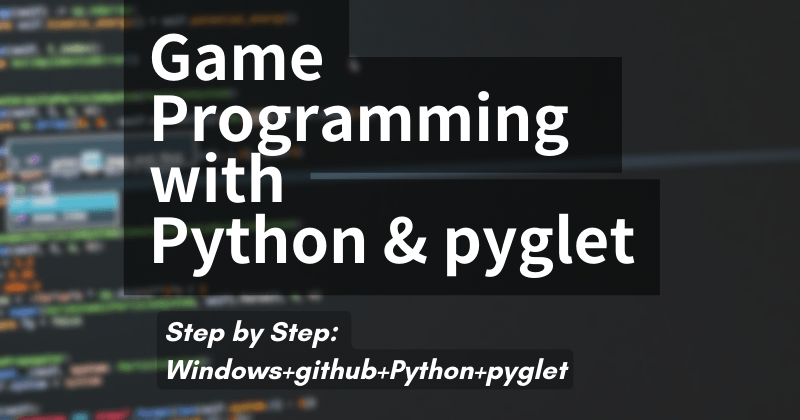「プレイヤー」らしき形が描画できました。
今回は
- 共通処理を GameObject class にまとめる
- プレイヤーをキー入力に従って移動できるようにする
処理を書いてみましょう。
プレイヤー・弾・敵…などなど、共通部分が多くなりそうなので、”GameObject” という名前で共通のクラスを作ってみよう、というイメージです。まずは、GameObject class に何をどこまで処理してもらうのか、考えないといけません。
- shape.Line で作られた shape を管理する
- 位置を管理する
- 定期的に呼び出される on_update を持つ
…くらいでしょうか。定期的に呼びだす処理はちょっと前に書いた通り、pyglet.clock.schedule_interval で書けます。
class GameObject():
def __init__(self):
pass
def create_lines(self, lines, color):
pass
def on_update(self, dt):
pass
game_objects = []
def on_update(dt):
for game_object in game_objects:
game_object.on_update(dt)
pyglet.clock.schedule_interval(on_update, 1 / 120.0)みたいにして、Player を GameObject class として作ってやれば、プレイヤーの定期的な更新処理が呼ばれますね。その中でキー入力を取得すれば、移動が書けます。
まとめると、100行くらいになりました。
import pyglet
from pyglet import shapes
from pyglet.window import key
from collections import defaultdict
title = "Pyglet Shooting Game"
WINDOW_WIDTH = 640
WINDOW_HEIGHT = 480
window = pyglet.window.Window(WINDOW_WIDTH, WINDOW_HEIGHT, title)
batch = pyglet.graphics.Batch()
LINE_WIDTH = 2
PLAYER_SPEED = 120
@window.event
def on_draw():
window.clear()
batch.draw()
key_status = defaultdict(bool)
@window.event
def on_key_press(symbol, modifiers):
key_status[symbol] = True
@window.event
def on_key_release(symbol, modifiers):
key_status[symbol] = False
game_objects = []
class GameObject():
def __init__(self):
self.is_dead = False
self.line_shapes = []
self.lines = None
self.x = 0
self.y = 0
def create_lines(self, lines, color):
self.lines = lines
for line in lines:
x1 = self.x + line[0][0]
y1 = self.y + line[0][1]
x2 = self.x + line[1][0]
y2 = self.y + line[1][1]
self.line_shapes.append(shapes.Line(x1, y1, x2, y2, width=LINE_WIDTH, color=color, batch=batch))
def on_update(self, dt):
for (line, line_shape) in zip(self.lines, self.line_shapes):
line_shape.x = self.x + line[0][0]
line_shape.y = self.y + line[0][1]
line_shape.x2 = self.x + line[1][0]
line_shape.y2 = self.y + line[1][1]
def on_update(dt):
for game_object in game_objects:
game_object.on_update(dt)
pyglet.clock.schedule_interval(on_update, 1 / 120.0)
class Player(GameObject):
def __init__(self, x, y):
super().__init__()
self.x = x
self.y = y
# 菱形
lines = (
((0, 16), (8, 0)), ((8, 0), (0, -16)),
((0, -16), (-8, 0)), ((-8, 0), (0, 16))
)
color = (0, 230, 0)
self.create_lines(lines, color)
def on_update(self, dt):
d = dt * PLAYER_SPEED
dx = 0
dy = 0
if key_status[key.W]: # up
dy = d
elif key_status[key.S]: # down
dy = -d
if key_status[key.A]: # left
dx = -d
elif key_status[key.D]: # right
dx = d
self.x += dx
self.y += dy
super().on_update(dt)
def create_player():
player = Player(WINDOW_WIDTH // 2, WINDOW_HEIGHT // 3)
game_objects.append(player)
create_player()
pyglet.app.run()
